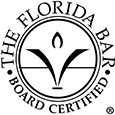What is historical preservation compliance?
Historical preservation requires following regulations and guidelines governing historic buildings, structures, and sites. These regulations aim to protect and preserve buildings and structures with historic or cultural significance, ensuring that they are not altered or destroyed in a way that compromises their historic value.
Requisite compliance may involve obtaining permits and approvals before making changes to a historic building or site, following specific guidelines for repairs and restoration, and ensuring that any new construction in the vicinity of historic buildings or sites is in keeping with the surrounding historic context.
In some cases, local or state governments may have designated historic districts or landmarks subject to additional regulations and protections. In these cases, property owners may be required to follow specific guidelines for any changes to the exterior of their buildings or structures. They may need to obtain approvals from a historic preservation board or commission.
Need help with a matter related to historical preservation compliance? Schedule your consultation today with a top land use and zoning attorney.
In Florida, which laws and regulations relate to historical preservation compliance?
In Florida, historical preservation is governed by both state and local laws and regulations. Some of these include:
- Florida Statutes Chapter 267 – Historical Resources: These statutes establish the Division of Historical Resources and the Florida Historical Commission within the Florida Department of State. They also outline the powers and duties of the division concerning historic preservation.
- Florida Administrative Code Chapter 1A-46: This code establishes rules and procedures for the administration of historic preservation programs in Florida, including the identification and designation of historic resources.
- Florida Building Code 3401.5 – Special Historic Buildings: This code outlines the standards for the alteration, repair, addition, and change of occupancy of existing buildings, including historic buildings.
- Local Historic Preservation Ordinances: Many cities and counties in Florida have their historic preservation ordinances that provide additional regulations and protections for historic buildings and sites. Property owners should check with their local government’s municipal ordinances to determine their area’s specific requirements.
What are common issues regarding historical preservation compliance that lead to litigation?
The following issues are among the most common in actions regarding historical preservation compliance, especially in land use and zoning matters:
- Violations of Zoning Ordinances: Zoning ordinances regulate how land can be used, and violations of these ordinances can result in legal action. Owners of locations subject to historical preservation requirements should consult the relevant state and local laws to understand how such a designation impacts the application of zoning regulations. In many cases, a ‘historical’ designation leads to the application of additional zoning regulations that would otherwise not be imposed.
- Building Setbacks: Setbacks are the distances between a building and the property line, and zoning ordinances often require them. Failure to comply with setback requirements can result in legal action, especially if the violation affects a neighbor’s property, such as through blocked views or loss of sunlight.
- Land Use Restrictions: Land use restrictions, such as conservation easements or deed restrictions, can limit how a property can be used or developed. Violations of these restrictions can result in legal action, including lawsuits seeking to enforce the limits or seeking damages for violations.
- Non-compliance with Environmental Regulations: Environmental regulations may also impact historical preservation compliance and can result in litigation. For example, building on protected wetlands or failing to comply with stormwater management requirements can result in legal action.
In addition, federal law can impose additional regulations and protections if the building or site is listed on the National Register of Historic Places.
We are value-based attorneys at Jimerson Birr, which means we look at each action with our clients from the point of view of costs and benefits while reducing liability. Then, based on our client’s objectives, we chart a path forward to seek appropriate remedies.
To determine whether your unique situation may necessitate litigation, please contact our office to set up your initial consultation.
What are effective measures to minimize the risk of litigation over compliance issues?
Several measures can be taken to minimize the risk of litigation over lack of historical preservation compliance, including:
- Obtaining the Necessary Approvals and Permits: Before making any changes to a historic building or site, property owners should ensure they have obtained all necessary approvals and permits from the appropriate government agencies. This includes obtaining approval from any local historic preservation boards or commissions.
- Consulting with Experts: Property owners should consult with architects, contractors, and other experts with experience working with historic buildings and sites. These experts can help ensure changes comply with historic preservation regulations and guidelines.
- Following Guidelines for Repairs and Restoration: When making repairs or restoring a historic building or site, property owners should follow the specific guidelines for that property, which may include using particular materials and techniques.
- Documenting All Changes: Property owners should document all changes to a historic building or site, including photographs and detailed descriptions of the work done. This documentation can be used to demonstrate compliance with historic preservation regulations in the event of a dispute.
- Communicating with Stakeholders: Property owners should communicate with neighbors, historic preservation boards, and other stakeholders to ensure that everyone is aware of any historic building or site changes. This can help prevent disputes and misunderstandings.
Frequently Asked Questions
What types of properties are subject to historical preservation regulations?
Historical preservation regulations may apply to various properties, including buildings, historic districts, and archaeological sites. Sometimes, entire towns or cities may be designated historic districts subject to preservation regulations.
What are some potential consequences of non-compliance with historical preservation regulations?
Non-compliance with historical preservation regulations can result in legal action by government agencies or private individuals, leading to fines, penalties, and legal fees. In some cases, non-compliance may also result in the loss of tax credits or other financial incentives for property owners.
Why is historical preservation important?
Historic preservation is important because it helps maintain a community’s character and identity, and it can also provide economic benefits by attracting tourism and supporting local businesses. Additionally, historic buildings and sites often have significant cultural and educational value, and preserving them allows future generations to learn about and appreciate the past.
Have more questions about a historical preservation compliance-related situation?
Crucially, this overview of historical preservation compliance does not begin to cover all the laws implicated by this issue or the factors that may compel the application of such laws. Every case is unique, and the laws can produce different outcomes depending on the individual circumstances.
Jimerson Birr attorneys guide our clients to help make informed decisions while ensuring their rights are respected and protected. Our lawyers are highly trained and experienced in the nuances of the law, so they can accurately interpret statutes and case law and holistically prepare individuals or companies for their legal endeavors. Through this intense personal investment and advocacy, our lawyers will help resolve the issue’s complicated legal problems efficiently and effectively.
Having a Jimerson Birr attorney on your side means securing a team of seasoned, multi-dimensional, cross-functional legal professionals. Whether it is a transaction, an operational issue, a regulatory challenge, or a contested legal predicament that may require court intervention, we remain a tireless advocate every step of the way. Being a value-added law firm means putting the client at the forefront of everything we do. We use our experience to help our clients navigate even the most complex problems and come out the other side triumphant.
If you want to understand your case, the merits of your claim or defense, potential monetary awards, or the amount of exposure you face, you should speak with a qualified Jimerson Birr lawyer. Our experienced team of attorneys is here to help. Call Jimerson Birr at (904) 389-0050 or use the contact form to set up a consultation.
Here are some blogs written by JB attorneys that provide more information about historical preservation compliance:

We live by our 7 Superior Service Commitments
- Conferring Client-Defined Value
- Efficient and Cost-Effective
- Accessibility
- Delivering an Experience While Delivering Results
- Meaningful and Enduring Partnership
- Exceptional Communication Based Upon Listening
- Accountability to Goals









